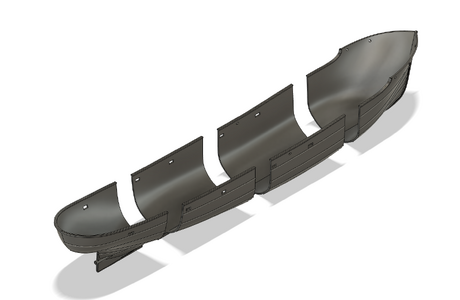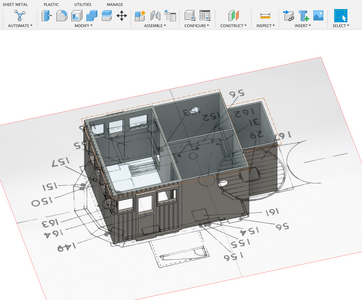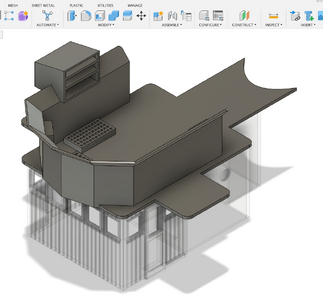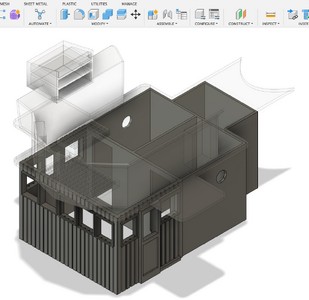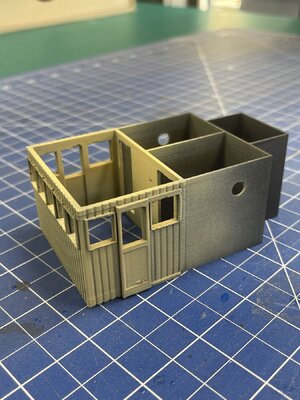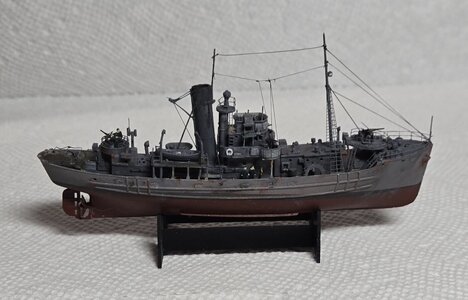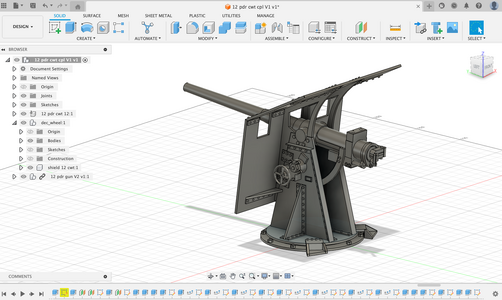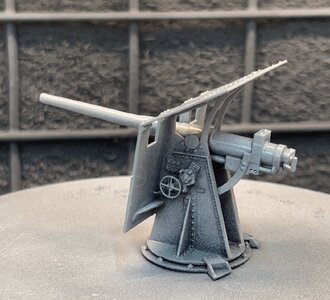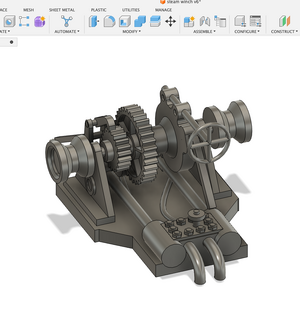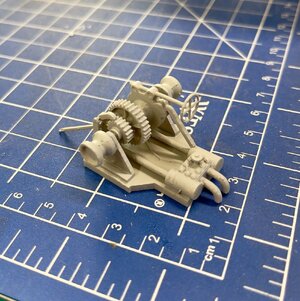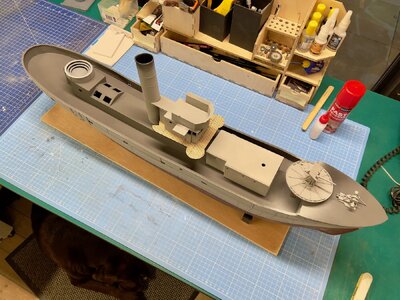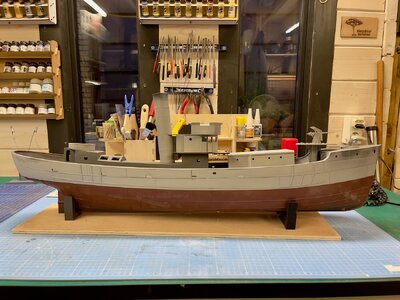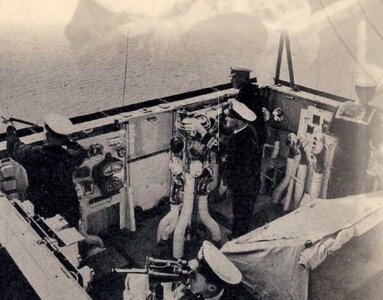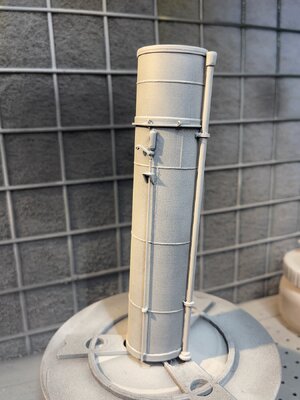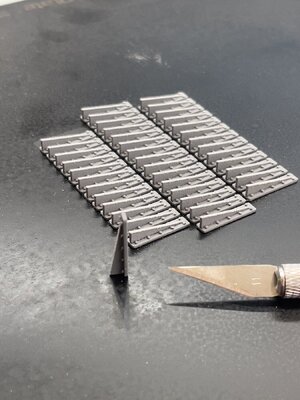- Joined
- Jul 18, 2024
- Messages
- 268
- Points
- 238

I already started with her a few weeks ago, so I'll have to summarise what's what up till now.
First: this is a steep learning curve for me. I started designing in CAD (Fusion) AND started 3D printing AND started scratch building. Oh well. I have some experience in reaching unattainable goals ... worst that can happen is that I learn.
Second: I will build the ship according to John Lambert plans, photos and whatever I could find online. BUT I will deviate where I think it will serve the model and the goal: having fun designing and building her. I am less of a "pixel peeper" and more of a "that looks good" person.
So, about T227. She's one of the class with a deck house and she's one of the trawlers painted mostly in 507a: dark grey. After WW2 she was sold and converted to a true trawler, namen "Milford Star". Guess what, I built that one. So there is a logic in my choice for Sir Gareth.
The model: I wanted to really start from scratch, so started designing the hull in CAD. That was fun ... I never thought about hulls ... they are kind of 4D shaped ... warped ... But after a dozen mishaps and mistrials, I succeeded in getting something I could print.
After that I created the rough structural objects of the model: deck house, main upper structure, etc. This all in FDM (filament). Later on I'll do the detailed parts in resin. And I'm sure I'll revert to good old fashioned brass wire, "plastic strip", etc. where appropriate. It's no b****y use trying to be smart in 3D when a piece of rod and a sharp knife can do the job in half the time.
So here we are, with a rough setup and a looong time ahead detailing.
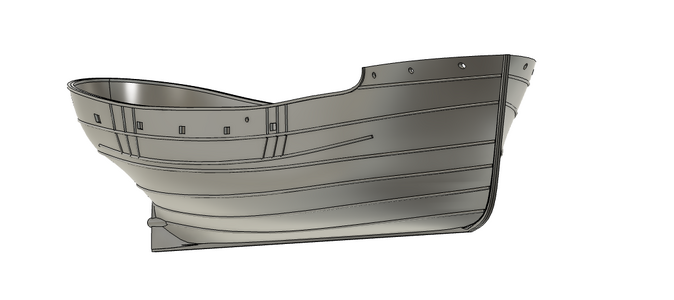
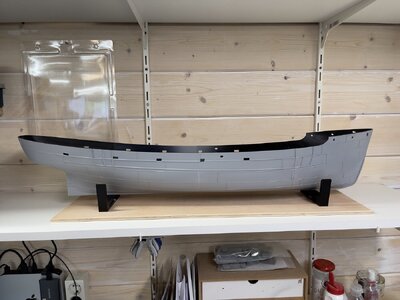
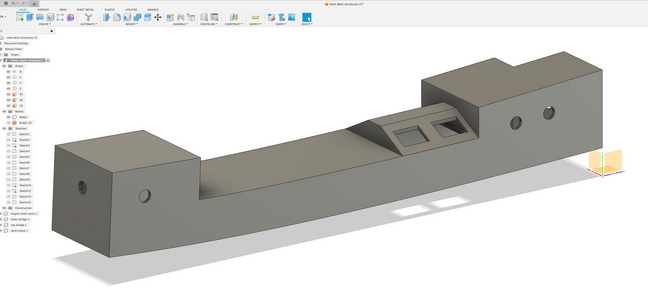
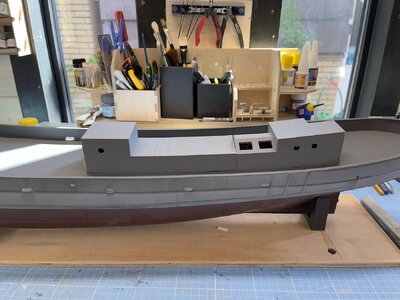
First: this is a steep learning curve for me. I started designing in CAD (Fusion) AND started 3D printing AND started scratch building. Oh well. I have some experience in reaching unattainable goals ... worst that can happen is that I learn.
Second: I will build the ship according to John Lambert plans, photos and whatever I could find online. BUT I will deviate where I think it will serve the model and the goal: having fun designing and building her. I am less of a "pixel peeper" and more of a "that looks good" person.
So, about T227. She's one of the class with a deck house and she's one of the trawlers painted mostly in 507a: dark grey. After WW2 she was sold and converted to a true trawler, namen "Milford Star". Guess what, I built that one. So there is a logic in my choice for Sir Gareth.
The model: I wanted to really start from scratch, so started designing the hull in CAD. That was fun ... I never thought about hulls ... they are kind of 4D shaped ... warped ... But after a dozen mishaps and mistrials, I succeeded in getting something I could print.
After that I created the rough structural objects of the model: deck house, main upper structure, etc. This all in FDM (filament). Later on I'll do the detailed parts in resin. And I'm sure I'll revert to good old fashioned brass wire, "plastic strip", etc. where appropriate. It's no b****y use trying to be smart in 3D when a piece of rod and a sharp knife can do the job in half the time.
So here we are, with a rough setup and a looong time ahead detailing.







